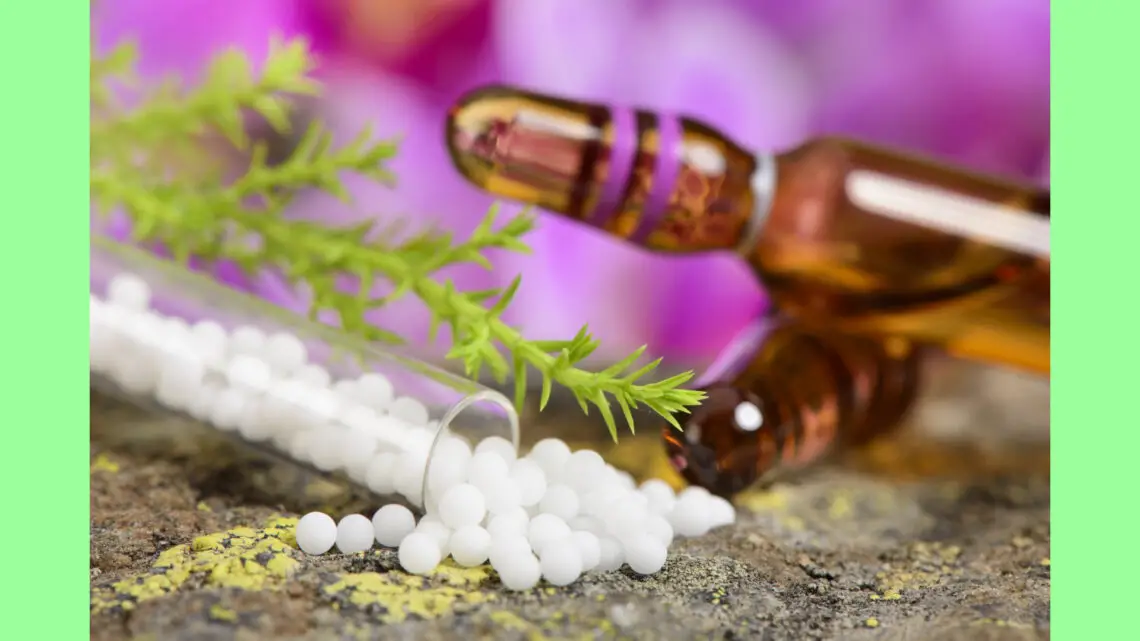There are some problems with homeopathic research. Apart from isolated instances such as trials for hay fever, most of the research that’s been conducted into homeopathy suffers from a lack of replication. This occurs primarily because, unlike a pharmaceutical drug that can be patented and the profits monopolised, anyone can manufacture a homeopathic medicine and so it can’t be patented, which makes the motivation to conduct large expensive clinical trials unattractive for potential investors.
There are also inherent difficulties in researching this area because traditionally, homoeopathic treatments are individualised; 5 people suffering from rheumatoid arthritis may each receive a different remedy because of subtle differences in their clinical presentation.
However, this hasn’t stopped researchers from conducting and publishing their findings in this area and following are some recent examples from the peer-reviewed journals.
Human Research
1. Mourao LC, et al. Comparative Evaluation of Homeopathic Therapy in the Treatment of Chronic Periodontitis. Altern Ther Health Med. 2022;28(1):100-6. 85 individuals with periodontitis and type 2 diabetes (T2D) were divided into 2 groups: G1, individuals with periodontitis without systemic conditions; and G-2, individuals with periodontitis and T2D.
Both groups received homeopathic treatment and were evaluated in clinical and laboratory examinations. The medication used was chosen based on the similarity principle: Berberis 6C, Mercurius Solubilis/Belladona/Hepar Sulfur and a Pyrogenium 200C biotherapic.
Medications were prescribed for all signs and symptoms, while biotherapics were used for chronic stimulation. Both groups showed significant clinical and laboratory improvements during the study from baseline to 1 year with reductions in total cholesterol, triglycerides, glucose, glycated haemoglobin, uric acid and C-reactive protein. Statistical and descriptive analyses were performed. For most parameters, G1 performed better than G2 (P < .05).
2. Shahid S, et al. Efficacy of Individualized Homeopathic Medicines in Plantar Fasciitis: Double-blind, Randomized, Placebo-Controlled Clinical Trial. Homeopathy. 2022;111(1):22-30. 75 people with plantar fasciitis were randomised to receive either individualised homeopathic medicines (IHMs) or identical-looking placebo in the mutual context of conservative non-medicinal management.
The Foot Function Index (FFI) questionnaire, as an outcome measure, was administered at baseline, and every month, up to 3 months. Group differences (unpaired t-tests) and effect sizes (Cohen’s d) were calculated on an intention-to-treat sample.
The sample was analysed statistically after adjusting for baseline differences. Differences between groups in total FFI% score favoured IHMs against placebo at all time points, with large effect sizes: month 1 (mean difference, -10.0; 95% confidence interval [CI], -15.7 to -4.2; p = 0.001; d = 0.8); month 2 (mean difference, -14.3; 95% CI, -20.4 to -8.2; p <0.001; d = 1.1); and month 3 (mean difference, -23.3; 95% CI, -30.5 to -16.2; p <0.001; d = 1.5).
Similar significant results were also observed on three FFI sub-scales (pain%, disability%, and activity limitation%). Natrum muriaticum (n = 14; 18.7%) and Rhus toxicodendron and Ruta graveolens (n = 11 each; 14.7%) were the most frequently prescribed medicines.
3. Knackstedt R, et al. Perioperative Homeopathic Arnica and Bromelain: Current Results and Future Directions. Ann Plast Surg. 2020;84(3):e10-e15. A database search was conducted with the keywords “arnica,” “bromelain,” and “surgery.” References for each identified article were analysed for additional articles.
Articles were analysed for methodology, outcomes, and conclusion. Articles were excluded if they did not involve human subjects, were published before 1990, and if they were not available in English. Level of evidence was determined based on methodology.
29 articles met inclusion criteria, with 20 and 9 in the arnica and bromelain treatment groups, respectively. There was marked heterogeneity with regard to surgical procedure, dosing regimen, outcomes measured, and results.
Arnica seemed to have a mitigating effect on ecchymosis, most notably following rhinoplasty and facelifts/facial procedures. Bromelain was well supported across numerous studies in reducing trismus, pain, and swelling following molar extractions. However, there was no effect demonstrated when evaluating topical Arnica following blepharoplasty procedures.
4. Sadhukhan S, et al. Individualized Homeopathic Medicines in Stage I Essential Hypertension: A Double-Blind, Randomized, Placebo-Controlled Pilot Trial. J Altern Complement Med. 2021;27(6):515-21. 72 people with stage I hypertension were randomised to receive individualised homeopathy (IH) or placebo.
Outcome measures were feasibility issues, blood pressure and Measure Yourself Medical Outcome Profile-2, assessed for 6 months. Group differences were seemingly higher in the IH group than in the placebo group.
5. Dey S, et al. A Randomized, Double-Blind, Placebo-Controlled, Pilot Trial of Individualized Homeopathic Medicines for Cutaneous Warts. Homeopathy. 2021;110(3):149-59. 53 people with cutaneous warts were randomised to receive either individualised homeopathic (IH) medicines or identical-looking placebo.
Primary outcome measures were numbers and sizes of the warts; secondary outcome was the Dermatology Life Quality Index (DLQI) questionnaire measured at baseline, and every month for up to 3 months. Group differences and effect sizes were calculated on intention-to-treat sample.
Intra-group changes were significantly greater (all p < 0.05, Friedman tests) in IH than placebo. Inter-group differences were statistically non-significant (all p > 0.05, Mann-Whitney U tests) with small effect sizes-both in the primary outcomes (number of warts after 3 months: IH median [inter-quartile range; IQR] 1 [1, 3] vs. placebo 1 [1, 2]; p = 0.741; size of warts after 3 months: IH 5.6 mm [2.6, 40.2] vs. placebo 6.3 [0.8, 16.7]; p = 0.515) and in the secondary outcomes (DLQI total after 3 months: IH 4.5 [2, 6.2] vs. placebo 4.5 [2.5, 8]; p = 0.935). Thuja occidentalis (28.3%), Natrum muriaticum (10%) and Sulphur (8.3%) were the most frequently prescribed medicines.
6. Parewa M, et al. Individualized Homeopathic Medicines in the Treatment of Generalized Anxiety Disorder: A Double-Blind, Randomized, Placebo-Controlled, Pilot Trial. Complement Med Res. 2021;28(5):407-18. 62 generalised anxiety disorder (GAD) patients received either individualised homeopathic medicines (IH) plus psychological counselling (PC), or identical-looking placebo plus PC. GAD-7 questionnaire and Hamilton Anxiety Scale (HAM-A) were used as the primary and secondary outcomes, respectively, measured at baseline and at 3 months.
Patients Intention-to-treat sample was analysed to detect group differences using unpaired t tests. GAD-7 reductions were non-significantly higher in IH than placebo (p = 0.122). Group differences on HAM-A favoured IH significantly (p = 0.018). Effect sizes were small to medium. Calcarea carbonica was the most frequently indicated medicine.
In Vitro Research
1. Sudowe S, et al. Effects of Bacillus firmus e volumine ex muris cellulae 6x on cytolytic activity of natural killer cells in vitro. Int J High Dilution Res. 2021;20(2-3):34-43. Natural killer (NK) cells are among the first in defence of the innate immune system by eliminating a variety of abnormal or stressed cells such as cancer cells or virus-infected cells.
Individuals who exhibit low cytolytic NK cell activity are believed to be at higher risk of viral infection, cancer, and various other diseases of the immune system. Therefore, the restoration of impaired NK cell function might be an essential step in immunostimulatory therapy of immunocompromised patients.
Bacillus firmusis a non-pathogenic gram-positive bacterium of the environment, which possesses various immunomodulatory properties in vitro and in vivo. This retrospective study reported on the effect of B. firmuson on the activity of NK cells in vitro.
Basal cytolytic NK cell activity against tumour cells among peripheral blood mononuclear cells (PBMCs) of routine patients was determined in a standardised NK cell cytotoxicity assay.
The impact of the cultivation of PBMCs with B. firmus preparation Bacillus firmus e volumine ex muris cellulae (Bacillus firmus (evc)) 6X (a homeopathically prepared material) on tumour cell killing by NK cells was monitored in relation to basal NK cell activity.
This study showed that stimulation of PBMCs with Bacillus firmus (evc) 6X in vitro led to a significant increase in NK cell function. Substantial improvement in cytolytic NK cell activity (more than 1.3-fold of basal activity) was much more pronounced for compromised NK cell function patients.
2. Marzotto M, et al. Fibronectin Gene Up-regulation by Arnica montana in Human Macrophages: Validation by Real-Time Polymerase Chain Reaction Assay. Homeopathy. 2020;109(03):140-5. Macrophages derived from the THP-1 cell line were differentiated with interleukin-4 to induce a ‘wound-healing’-like phenotype, and treated with various dilutions of Arnica m. (2C, 3C, 5C, 9C, and 15C) or control solvent for 24 hours.
RNA samples from cultured cells were analysed by real-time quantitative polymerase chain reaction in 5 separate experiments. Arnica 2C (final concentration of sesquiterpene lactones in cell culture = 10−8 mol/L) significantly stimulated the expression of 3 genes which code for regulatory proteins of the extracellular matrix, namely FN1 (fibronectin 1, % increase of 21.8 ± standard error of the mean 4.6), low-density lipoprotein-receptor-related protein 1 (% increase of 33.4 ± 6.1) and heparan sulphate proteoglycan 2 (% increase of 21.6 ± 9.1).
Among these genes, the most quantitatively expressed was FN1. In addition, FN1, unlike other candidate genes, was upregulated in cells treated with higher dilutions/dynamisations (3C, 5C, and 15C) of Arnica. In conclusion, the extracellular matrix is a potential therapeutic target of Arnica, with positive effects on cell adhesion and migration during tissue development and healing.
Animal Research
1. Narita FB, et al. Evaluation of the Effects of Administering Ultradiluted Avena sativa and Echinacea angustifolia on the Hematological Parameters of Magellanic penguins (Spheniscus magellanicus) during the Reproductive Period. Homeopathy. 2022;10.5/s-0042-1751308.
18 penguins kept under human care in a zoological park setting were evaluated during the reproductive period and were divided randomly into 2 groups: a group subjected to treatment with Echinacea angustifolia 6C and Avena sativa 6C (N = 8; four breeding couples), and a placebo control group (N = 10; five breeding couples).
The investigators were blinded to treatment allocation. 2-way ANOVA was performed to determine whether the experimental group (control or verum) and the sex of the animal had any significant effect on the variation of each haematological parameter between the samples.
1-way ANOVA was performed on haematological parameters for which the sex did not present a significant effect. The significance level was p ≤0.05. Significant effects were seen regarding the following: mean corpuscular volume, in which the verum group showed an increase (29.78 ± 52.95 fL) while the control group showed stability/reduction (−3.08 ± 46.36 fL) (p = 0.049); proportion of heterophils, in which the verum group showed a less marked increase (8.38 ± 12.53%) than that of the control group (18.00 ± 9.37%) (p = 0.010); lymphocyte concentration, in which the verum group showed less marked reduction (−4.39 ± 2.21 × 109 cells/L) than that of the control group (−1.56 ± 2.76 × 109 cells/L) (p = 0.001); and proportion of lymphocytes, in which the verum group showed a less marked reduction (−6.75 ± 10.35%) than that of the control group (−17.3 ± 8.73%) (p = 0.002).
Treatment with Echinacea angustifolia and Avena sativa resulted in maintenance of lymphocyte levels in Magellanic penguins during the breeding period, thus aiding these birds’ immunity.
Plant Research
1. Faedo LF, et al. Ecological Strawberry Production: Promoting Crop Vitality with High-Dynamized Dilutions. Int J High Dilution Res. 2022;21(2):09-09. The objective of this research was to explore the extent to which highly dynamised dilutions can increase the sustainability of commercial strawberry production as well as understand the challenges and benefits of using highly dynamised dilutions in agriculture.
To do this, natural and social science methods were combined in a multi-disciplinary approach that was developed simultaneously in Brazil and the UK. Results of controlled trials demonstrated that the use of homeopathic Phosphorus12C, Sulphur 12C, and Kali carbonicum 12C positively influenced crop production, pest disease levels, and plant vigour in strawberry plants.
In addition, data collected from a web survey and interviews with farmers, researchers, and advisors who work with homeopathy, evidenced the role of homeopathy and biodynamic farming as transformative tools regarding ecological awareness and ecological education, helping to advance the concept of the agriculture organism and subtle aspects of life into agricultural research and society.





